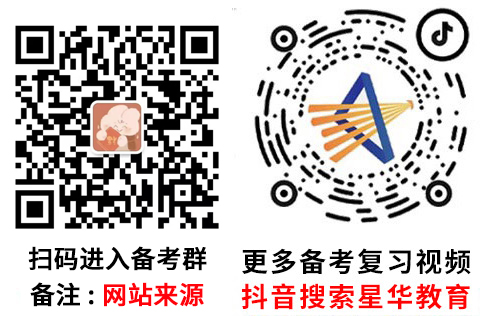高职高考英语|状语从句是什么?
高职高考英语|这是很多同学都很好奇的问题,下面惠州星华教育老师给大家科普一下,希望对大家有帮助。状语从句是什么?
(一) 状语从句的概念和分类
在句中做状语的一般为副词, 所以副词性从句就是状语从句。状语从句分为时间状语从句、地点状语从句、原因状语从句、条件状语从句、目的状语从句、结果状语从句、让步状语从句、比较状语从句和方式状语从句共九种。
学习状语从句主要应注意引导状语从句的从属连词的用法与区别,以及从属连词在一定的语言环境中的意义与用法。
(二)状语从句在复合句中的位置
一般说来,状语从句在复合句中的位置比较灵活,有时置于句首,有时置于句末,有时置于句首与句末都可以。如:
While I was working in the garden, mywife was cooking dinner. 我在园子里干活时,我妻子正在做饭。
Wait until the children settle downbefore you start the lesson. 等学生都静下心来再开始上课。
当状语从句置于句首时,其后通常会用逗号隔开。但当句子较短或当状语从句与主句的关系比较密切时,也可以不用逗号。如:
If you pull too hard you will break therope.
如果太用力拉,就会把绳子拉断。
当状语从句位于句末时,其前一般不用逗号。但是,如果状语从句与其前主句的关系不是很密切,尤其作为添补内容时,其前也可用逗号,如:
Better say yes, if they ask you. 如果他们问你,你最好说“是”。
We knew he couldn’t have paid for it,because he had no money. 我们知道不可能是他付了这笔钱,因为他没钱。
另外,状语从句有时也可位于句子中间,如:
He said that if I passed my test hewould buy me a car. 他说如果我通过考试,他将给我买辆汽车。
This, if the news (should) be true, isa very serious matter. 如果消息属实,这可是一件非常严重的事情。
1.地点状语从句常用引导词有where;
特殊引导词有wherever,anywhere' everywhere。
2.原因状语从句常用引导词有because, since, as;
特殊引导词有seeing that, now that, in that, considering that, giventhat, in as much as, in so much aS。
3.目的状语从句常用引导词有so that, in order that;
特殊引导词有lest, in case, for fear that, in the hope that, for thepurpose that, to the end that。
4.结果状语从句常用引导词有so... that, such..that;
特殊引导词有such that, to the degree that. to the extent that, tosuch a degree that。
5.条件状语从句常用引导词有if,unless;
特殊引导词有as/so longas, only if'providing/provided that, suppose that, incase that, on condition that。
6.让步状语从句常用引导词有though,although,even if,even though;
特殊引导词有as(用在让步状语从句中必须要倒装).while( -般用在句首),no matter.,,,in spite of the facthat, while, whatever, whoever, wherever, whenever,however,whichever。
7.比较状语从句常用引导词有as(同级比较),than(不同程度的比较),特殊引导词有the more.the more.just as.
so.…A is to B what /as X is to Y, no... more than, notA so much as B。
8.时间状语从句when和while有时可以起并列连词的作用。
(1) when作并列连词时意为“突然”“正在这时”。
(2)while意为“……而……但是……”,连接两个意义上相互对比的成分。
例如:
Jane was dressed in brown while Mary was dressed inblue.
简穿褐色衣服,玛丽却穿蓝色衣服。
when表时间,从句既可以用延续性动词,又可以用瞬间动词。
as表时间,与when相似,但侧重强调主从句动作同点或同段进行。
when,while后可以接分词短语。
常用引导词有when;
特殊引导词有wher\ever,whil。,as, before, after, since, till, once, as soon as等。
9.方式状语从句常用引导词有as,as if,as though等。
附:比较下列引导状语从句的引导词
1. because, as, since, for
语气位置 意义
because 最强 前或后 “原因”;表客观因果关系
as较强 刖“由于”;把众人所知的事实当做理由
slnce较弱 前“既然”;就对隽.陈述的事实作为理由
for最弱 后“理由”;对某一事实进行推断的理由
注:上面所说的“前”,指从句在主句之前;“后”,指从句在主句之后。
2. so that, so... that, such...thatso that意为“以便”“结果”,表目的和结果。
注意:在从句中有情态动词表目的,无情态动词表结果。
so.that意为“如此……以至于”,表结果。该结构常见于:
①so+形/副+that②so+形+a(an)+单数名词+that③so+many/much+复数名词(不可数名词)+thatsuch.,.that“如此的……以至于”,表结果。该结构常见于:八such+a( an)+形容词十名词+that;Bb such+形容词十复数名词/不可数名词+that。
3. though,although,as though在句首表“尽管”时 though和although两者都可以用,但句后不能再用but。
下列情况只能用though:as though( =as if);eventhough(一even if)。
在句末表示“然而”,as表示“尽管”,从句的表语、状语等成分要倒装。
4. whatever, howwever, wherever, whenever它们是what,how,where,when的强势语气,分别等于:no matter what, no matter how, no matter where, nomatter when。
5.when,while.aswhen通常指一时的动作或状态,表示从句动作与主句动作同时发生,或先于主句动作;while常用来引导两个同时进行的持续时间较长的动作;as常用来引导两个动作紧接着发生,强调“同一时间”或“一先一后”。
注意:while表时间,从句需用延续性动词,不可用瞬间动词。
when表时间,从句既可以用延续性动词,又可以用瞬间动词。
as表时间,与when相似,但侧重强调与主句动作同点或同段进行。
when,while可以接分词短语。
更多高职高考资讯请关注网站动态,或者来星华教育了解一下。

相关文章
- 韩山师范学院-2023年春季高考招生简章-学校简介
- 汕尾职业技术学院可以转专业吗-大专入学时可以转专业吗-专业分析-医疗医药类专业好不好-北大青鸟计算机编程培训
- 广东松山职业技术学院能不能转专业-大专转专业一般在什么时候-专业分析-管理类专业好不好-北大青鸟计算机职业学校
- 罗定职业技术学院好转专业吗-大专被不喜欢的专业录取了,怎么办-专业分析-化学类专业好不好-北大青鸟计算机考试培训
- 广东茂名健康职业学院转专业难吗-大专转专业是什么时间-专业分析-计算机类专业好不好-北大青鸟计算机设计培训
- 广东梅州职业技术学院入学时可转专业吗-大专可以转专业吗-专业分析-医疗医药类专业好不好-北大青鸟计算机网络培训
- 惠州城市职业学院可以转专业吗-大专入学时可以转专业吗-专业分析-新能源类专业好不好-北大青鸟计算机编程培训
- 广东环境保护工程职业学院能不能转专业-大专转专业一般在什么时候-专业分析-化学类专业好不好-北大青鸟计算机职业学校





 微信收款码
微信收款码 支付宝收款码
支付宝收款码